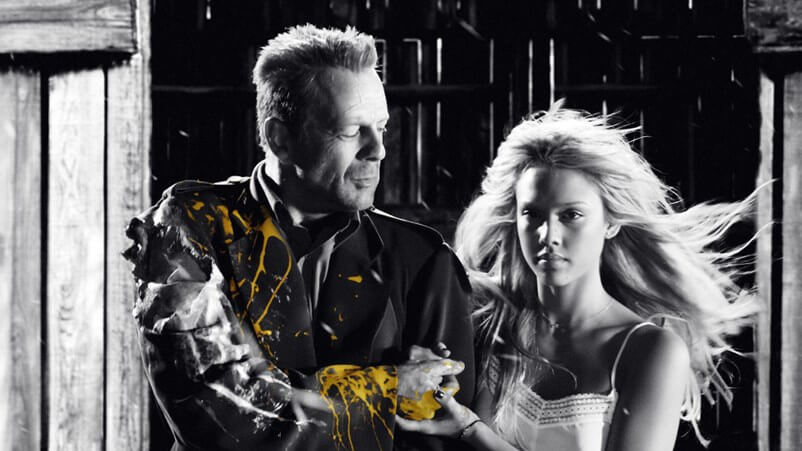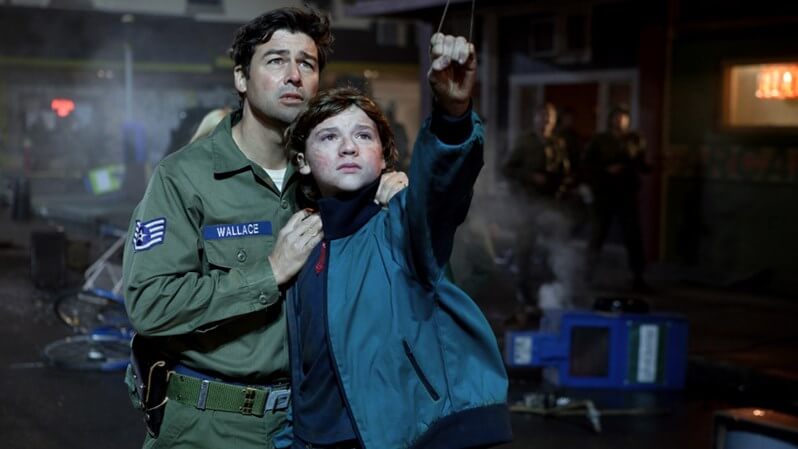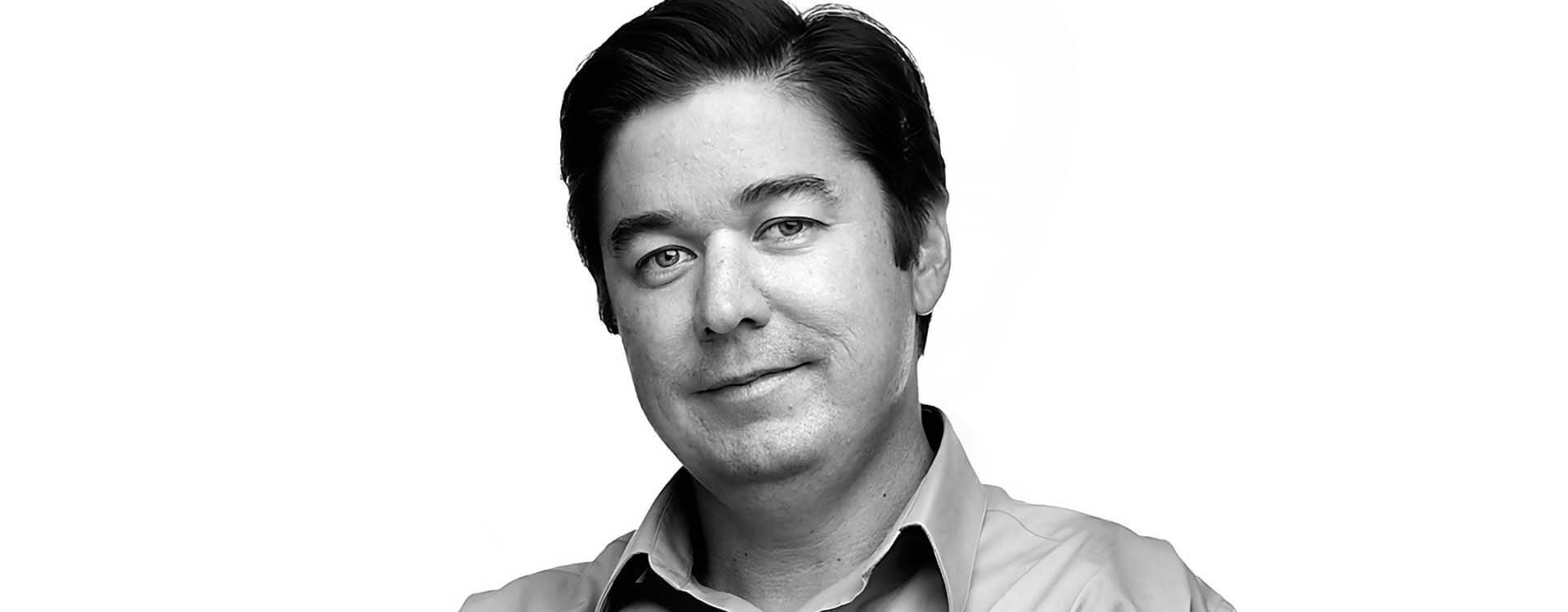Highlights
Table of Contents
Explore article topics
Growing up in a little town in Oregon back in the 1970s and 1980s, no one knew about film, according to John FK Parenteau, a visual effects artist and producer with over 30 years of credits in countless Hollywood productions like Sin City, Iron Man 2, Fast Five, Super 8, The Hunger Games to name a few. He knew he wanted to enroll in film school, but his guidance counselor wasn’t much help. “I have no idea how to advise you,” the guidance counselor told Parenteau. For someone growing up in that time period, there was one person who might understand his dream. George Lucas.
Parenteau wrote a letter to Lucas, or maybe it was to Lucasfilm or ILM—he can’t remember. But he did get a reply from one of Lucas’ people, who said, “you should go to USC film school.” Extremely naive about university admissions, Parenteau applied thinking “Okay, I’ll just go there.” Luckily, he was accepted.
After film school in the late 1980s, Parenteau cut his teeth as a cinematographer. But a parallel interest in 3D computer animation, then just in its infancy, led him down the path of a visual effects artist. The decision was a good one, as Parenteau ended up working for Steven Spielberg’s Amblin Imaging on shows like Seaquest DSV and the Star Trek franchise. Over the last 30 years, Parenteau has formed 2 visual effects companies, directed short films and produced a web series, which he also wrote, directed and edited.
Parenteau will be putting this wealth of filmmaking experience to work for Artgrid x Artlist’s second annual Edit Challenge.

In anticipation of the challenge, we spoke to Parenteau about his path into the film industry and career pivot from cinematography to 3D animation and visual effects. We also talked about his time with Spielberg at Amblin Imaging, and his tips for working with stock footage and sounds, as well as making great music videos, ads and trailers.
How did you get started in the film industry?
I focused a little bit more on cinematography early on. I didn’t feel like I had a voice for directing, and that’s a very mature way of saying right now what I felt in the past, which was I’d get on set and had no idea how to talk to actors. I was kind of freaked out. The visuals I really loved, so I focused a little bit more on that technical side through college and was a cinematographer outside of college.
I’m the kind of guy who likes to learn things. I like to do a lot of different things, and it’s served me well in my career, whether I’m with a big or small company that I can sort of flex around a lot. So I taught myself 3D animation when it was just coming up in desktop form in the late 1980s and early 1990s. That’s when I got hired by Amblin Entertainment to work as a CG artist on a TV show called Seaquest DSV. I ended up getting promoted to running the visual effects division called Amblin Imaging, where I was the vice president/general manager.
It’s very easy to go shoot something very specific, but to be able to create something out of existing footage is a really unique challenge… [and] really helpful in developing that storytelling ability that all filmmakers need.
That’s been my career—doing strange, cool things and always being open to new challenges. I ended up splitting that company off [of Amblin Entertainment] when DreamWorks was formed and moving into more producing but I’ve always shot [films] and started doing more directing. I actually directed a short film for a fun little challenge a bunch of friends did, and on set, I was working with actors for the first time in many, many years. One of the actors pulled me aside and said, “hey, you really know how to talk to actors. You’re really good at this directing thing.” And I was like, “where did I learn that?” I don’t know! It was really just the maturity of having been in the industry long enough.
I love filmmaking, I love storytelling, and that’s always been my thing is how to tell stories better, whether it’s with technology or with writing, directing or whatever.
Can you talk about the transition from doing the CG visuals to overseeing them?
I was really the lowliest of artists there at Amblin. When I got hired, there were a lot of other people already there. This is back in 1991/1992, so the concept of having a visual effects division was very new except for the likes of ILM or Apogee, or a couple of the old school companies.

Sin City (Dimension Films)
Imagine I’m an animator and I’m assigned a shot, and the shot has a certain CG model in it, and I can’t find it on the server. So, I walk over to the modeler and say, “hey, did you finish that model? I need to use it.” They say, “oh, yeah, I finished it.” I say, “okay, well, I’ll tell the texture artists that you’re done with it so they can start working on it. And next time you finish a model, just let me know, and I’ll help out, and I’ll let the people know.”
Flash forward about 9 months (a year after the division started), and the original boss was leaving. Amblin asks all the artists (except for me because I was the youngest guy there), who could take over the division? And they all said, “Well, you should just let John do it. He’s already producing it.” I didn’t know that I was doing that. I was just trying to facilitate getting work done. I was so excited about the job and I just wanted to do whatever I could do to help.
Maybe I’m speculating but perhaps being able to talk to other creatives ultimately helped you break down this perception you had of yourself that you didn’t know how to talk to actors?
Yeah, in a way. I mean, my mom and dad got divorced when I was very young, so I really didn’t grow up with a father or father figure, so any person in power didn’t really intimidate me. It was very easy for me to talk to the artists that were my peers, as well as an executive at university or Spielberg. That was a big part of me being a manager: being able to communicate the needs of the artistic side to the needs of the business side. After that, when I did direct for the first time, all that communication and ability to talk to people made it a lot easier for me to direct actors. But, I really think it was the maturity of understanding how to tell an actor something to get them to do something without being a bad director and telling them the wrong way.
So, after Amblin Imaging folds and DreamWorks is being created, what did you do?
The quick story there is that I talked to Steven about bringing us into DreamWorks and he said, “well, you know, (producer) Jeffrey Katzenberg (Shrek) wanted to focus on the animation division.” Katzenberg had certain teams that he wanted to bring aboard, and so it basically wasn’t a fit for us. So I asked Steven, “if I started my own company would you be a partner?: He said, “yeah, sure,” and so he was a silent partner and wasn’t very involved at all.
Think of sound as an emotional equivalent to what visuals do to your eyes, and build things using those sound elements, whether it be just music or sound effects. They don’t have to be big, they don’t have to be in your face, but that underlying rumble of sound intention is going to really be a massive benefit…
It was very cool because he enabled us to buy all the gear that we had at Amblin Imaging at a really good price from Universal Studios. And he enabled us to bring a lot of those contracts over from Universal that we already had at Ambling Imaging. We formed a company called Digital Muse—myself and John Gross.
One of Digital Muse’s first special effects projects was the cult series Sliders
Let’s talk a bit about being a judge on this edit challenge. What expectations do you have for it?
Well, I’ve never done a challenge like this. The thing that’s unique, I think, is that we’re using essentially the found footage concept with stock video from Artgrid and music from Artlist. So, in some sense of the word, it’s more creative than if you went and shot your own stuff. It’s very easy to go shoot something very specific but to be able to create something out of existing footage is a really unique challenge. I think it’s really helpful in developing that storytelling ability that all filmmakers need.
It’ll be really interesting to see how people create a story using various elements. I always go back to that moment when you go to film school when they showed you a shot of a picture of a person with a blank expression. Then they showed a picture of food, and then they showed the person with a blank expression again. And then they asked people, “What’s that person feeling?” and [the students] say, “Well, he’s hungry.” Then they do the same thing with something horrific and they say, “Oh, he’s afraid.” But the person hasn’t changed his expression, which is because the images feed each other and create a story whether you like it or not.
Using this kind of technique is really going to help develop an artist’s ability to tell stories using existing material, which is much harder than if you just get to create whatever you want to create, and direct whatever you want to direct in terms of the actor. I’m really excited to see what creativity comes out of this. I think it’s going to be very impressive, ultimately.

The Hunger Games (Lionsgate)
Yes, that’s interesting. For the longest time, I’ve worked with stock footage for music videos that I do for myself just for fun. I feel like part of the process of working with found footage and sound is just sort of playing with them because you really don’t have any sort of idea where it’s going to go, and then all of a sudden you’ve arrived. It’s like that cliche when people talk about art and creativity, and someone asks where an idea came from. Oftentimes, you don’t really know. You just started doing something and then it happens.
Yeah, this is definitely more purely creative that way because you do have to sort of find it artistically through the process and let it evolve on its own, as opposed to something you’ve scripted and shot very specifically, where you kind of already have a roadmap of where it’s going. This is true pure art because you don’t, like you said, know where it’s headed. And in the end, you may be surprised.
Having said that, though, do you have any tips or techniques that people could deploy to help during the Edit Challenge?
If I’m doing a music video, it all starts in the same place, which is with the music. The music sort of presents the theme in your brain; gives you a tone or a tempo of sorts that you find. Whether you shoot it yourself or use stock footage, I think the key is to find a piece of music first and think of what images it evokes in your head, what colors, what tones, what emotions it starts with and then go find pieces in Artgrid that bring out those images that are in your brain no matter how abstract they are. That’s when you start laying things out.
Just because you can pick up a camera and put something on YouTube doesn’t make you an excellent filmmaker, and it won’t unless you’re willing to do the work to figure out what makes a really good filmmaker, and to develop your own voice as a filmmaker.
Maybe there are moments in the song that evoke a certain emotion and others that are different, so start building it like a little bit of a mosaic and see what you come up with. That’s the beauty of editing: you can move it around, you can change things, you can get rid of clips. But I think ultimately it’s going to be the inspiration of the music that’s going to drive you, and that’s where I always suggest people start.
What would you say are some helpful tips for making a good trailer or video advertisement?
In a trailer you’re trying to tell a story, so you need to figure out what your story is ahead of time. It’s going to be so hard to try to put something together out of nothing if you don’t already know where you’re headed with that. If it’s an action piece, what’s the action? Is it a crime thriller, then what are you trying to evoke? In the end, you need to be able to draft a little bit of a story when it comes to a trailer because that’s the whole purpose of the trailer. In a sense, you’re writing it, then going to find elements that feed into it.
For ads, it’s a little bit more about the product, obviously. So what do you do? Again, we come back to story and theme. What h3rying to sell? If you’re trying to sell a hotel or something, then what are you trying to get across about the hotel? That it’s comfortable, that it’s a place where families belong? Then you want to start showing elements that bring those stories out. If we’re doing a family-friendly hotel, all you need are elements of the hotel, you need images of families and kids enjoying themselves in a similar environment, and you’re basically getting across the story of what you’re trying to tell. I always do those things.
You can do a lot of abstract stuff and just throw a lot of images together and probably get to that point, but it helps to have a little bit of a character arc or a story arc. In this case, footage where the family comes to the hotel first—they see it and the kids run off, and then we show the journey throughout the day. At the end of the night, the parents are asleep in bed but happy, you know, and they’re comfortable. You can do that with stock footage easily. So you kind of find those story points that carry you along.
I think with music videos you have a little bit more leeway because they’re more abstract, or can be more abstract. I tell stories in most of my videos as well, so you can do that, too.

Super 8 (Paramount Pictures)
I also feel that with ads and music videos, the editing beats are so different. When you edit a music video, you’re often editing to the musical rhythm or playing against it, while with ads you have to appreciate the arc.
Yeah, and I think you need to allow people to see things more clearly because you’re sort of presenting something in an environment or a product of some sort. You can’t rush it because it’ll be too distracting. It’s unlike a music video where you can go very fast if it appeals to the music. A trailer is kind of in-between, where you need a little bit of both. If you’re building something that’s action-related you want a bit of that fast cutting, but you also want it to breathe. It allows everybody to go, “wow, that was intense!”
[M]ake a lot of films, do a lot of research, do not be resistant to old films—you learn so much from them.
Thinking of the Edit Challenge again, what might you be able to say about appreciating or working with sound as a visual person.
Sound is equally as important as the visual because it will drive another emotional level of the project. It’s not just about showing a pretty picture. If you show a pretty picture in silence, that’s a different statement than if you show a pretty picture with a very powerful sound or music underneath it. I’m a cinematographer but I am a horrible sound person. [Laughs] I’ll go to interviews and I’ll forget sound because it’s always the last thing I think about, like recording dialogue or something like that.
So, think of sound as an emotional equivalent to what visuals do to your eyes, and build things using those sound elements, whether it be just music or sound effects. They don’t have to be big, they don’t have to be in your face, but that underlying rumble of sound intention is going to really be a massive benefit to making something emotionally powerful overall.
Get unlimited high-quality music for your videos
While people still go to film school, many people now just end up getting a camera and just start uploading stuff to YouTube, Instagram or TikTok. What advice do you have for people that are just coming into the motion picture field? It’s so drastically different from what you first experienced.
When I started, I wanted to be in the film business. There was no internet, there was no access to the materials that we have available now. I still think film school serves a purpose. If you’re coming into the industry, and you have the time and money, and you would like an education or a degree, it does serve a purpose down the road, which we can touch on a bit. However, you don’t have to go to film school to learn all this. But remember, it’s not about the school, it’s about the education. So if you don’t go to a film school, you still need to learn. And just because you can pick up a camera and put something on YouTube doesn’t make you an excellent filmmaker, and it won’t unless you’re willing to do the work to figure out what makes a really good filmmaker, and how do you develop your own voice as a filmmaker. That means watching old movies, watching YouTube videos, shooting a lot of stuff.
Filmmakers make films. People always say, “I want to be a filmmaker.” I say, “well, have you made anything?” They say, “well, I can’t find the time,” or whatever. It’s like, well, that’s your problem because even if you make a bad film, you’re making a film and you learn from that and move forward. So make a lot of films, do a lot of research, do not be resistant to old films—you learn so much from them. One of my favorites, Lawrence of Arabia, has always informed my cinematography when it applies. Learn from other people and study other material.
The other thing that film school gives you is networking. By being in film school you’re meeting a lot of people that you carry along through your life, if you stay in touch with them. You need that to be in the industry. If you don’t go to film school, you need to develop a network otherwise, and that doesn’t just mean on Facebook. Go to events locally. There are a lot of free events around whatever town you’re in; there are online events you can go to and learn a lot and meet people—that’s key to creating that network. If you don’t have that, where you can call on to help you and you can help them on projects, then you’re working in isolation and that’s never going to be good for your creativity.
Share this article
Did you find this article useful?
Related Posts
- By Artlist
- 5 MIN READ
- By Chris Suffield
- 10 MIN READ
Latest Posts
- 25 Apr
- By Josh Edwards
- 4 MIN READ
